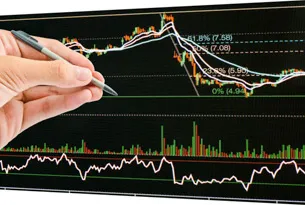Alternative strategies can ease volatility and add juice to a portfolio in various market cycles, says fund manager Stephen Hammers. Here, he explains how investors can use them alongside stock and bond strategies.
Kate Stalter: Today, we're talking with Stephen Hammers, manager of the Compass EMP Alternative Strategies Fund (CAIAX). Steve, I have a number of questions I wanted to ask you today, but before we get into those, explain the objective of your fund, and how it differs from a traditional equity or bond fund.
Stephen Hammers: Sure, I'll be happy to do that. The Compass EMP Fund has three mutual funds, but talking about the Alternative Strategies Fund in particular, there are no traditional-what we call long-only-stock or bonds in the portfolio.
Long-only means that you only make money when markets go up. When markets go down, like we saw four times in the last ten years, what happens is it pushes you way behind in your goal. You lose money, and then you have to wait until the money gets back up to where you were.
The Compass EMP Alternative Strategies Fund has no traditional US stock, international stock, or US bond that you sit and allocate hoping to make money. The Alternative Strategies Fund focuses on a stock hedging asset class, or a stock long-short. The short side means that when markets go down, you can actually short the stock markets and actually make them go up when markets go down.
Commodity long-short-most investors have commodity long-only. They can go down when the economy goes down. Managed futures-a very popular alternative asset class. Global currency, currency long-short, different currencies around the world-they can grow too. Real estate-a real estate hedging asset class. And of course, a global bond-hedge asset class.
- Also read: One Way to Adapt to a 0% Environment
When you put them all together, what happens is that you have a much smoother ride over time. You have much lower volatility. It's not what you call a market-neutral fund, which means you're neutral. You're not a bull. You're not a bear. You're in the middle.
So, your returns are very low, low volatility, very low returns. This does have growth potential like stocks do, but it gets there a different way. It has very low correlation, especially during the times where you need low correlation. When your stock funds zig, your alterative funds zag, and you're in the middle. That's what we do.
Kate Stalter: So, given all that, would capital preservation be one of the things that investors would look to from this fund?
Stephen Hammers: It is. It doesn't mean it will not go down a little bit. Preservation really means, "Hey, over time I'd like to keep my money." Well, when you have a stock portfolio, that's only one asset class and one market, like US stocks...that's not preserving your capital. It does not have that objective.
It may over a 20-year period of time, but when you buy an alternative fund like the Compass EMP Alternative Strategies Fund, your objective is to make money when markets go up or down, as long as they're trending in a direction.
We don't follow a short-term trend, because you can get whipsawed when markets go up and down, especially the way they did last year. Most markets trend upward over an 18-month, two-year period of time, and they trend downward the same. That's where we can take advantage of it and help preserve that over a three-year period of time.
Kate Stalter: How would investors incorporate this fund, Steve, into an overall portfolio?
Stephen Hammers: If an investor has a portfolio of stocks and bonds...let me give you an example. A typical moderate investor, they're not conservative, they're not aggressive, in the middle. Has about 60 stocks and 40 bonds.
In terms of beta or volatility, their beta is around 0.55. About 45% less risk than having all-stock. If they took one-third stock, one-third bond, and one-third alternative, they now have 75% less volatility in stocks, but they did not sacrifice their return.
That's the biggest benefit of adding alternatives. You just get there a different way. You're adding something different that can grow, too. You're diversifying your assets and you're having more growth than just stocks.
Kate Stalter: Let's talk about a couple of different scenarios for investors, then. In the case of the individual investor who's managing his or her own portfolio, what that person should know? Then in the case of somebody that's working with an advisor. Are advisors overlooking some of these benefits that you can bring them?
Stephen Hammers: Actually, not only advisors, but a lot of investors are. A lot of investors, they focus on: "Can I buy stocks?"
I pick stocks a certain way. It doesn't matter if you only pick good stocks, only the stocks that are growing. They have good, consistent earnings. They have dividends, good balance sheets. When times get tough and we go through a bear market, it doesn't matter whether they're good stocks or bad stocks-they're still going down.
So, an investor that even invests on their own, it can help them provide more base hits by including a portfolio on the side that they don't have to worry about, that has all the currencies and the commodities and the hedging and everything they need, that they don't have enough knowledge to do on their own.
An advisor who goes out there and picks some of the best stock managers and bond managers and they put a portfolio together, a lot of times they pick a value stock, a growth stock, a small-cap, a large-cap. Well, you know what? They're still stocks, and they still all have high correlation together.
Advisors also need to be looking at: "How can I hedge my downside risk? If that's the case, how much do I include?" Well, you have to have enough that has impact. If you only add 5% or 10%, it doesn't have enough impact.
Kate Stalter: Is this something that an individual investor can buy on their own, or do they need to go through their advisor, Steve?
Stephen Hammers: As long as you can breathe, you can buy it. So, it can be bought at Schwab or Fidelity with no load whatsoever. TD Ameritrade, no load.
Or you can buy it at an advisor. Most advisors don't charge a load anymore. They charge a flat fee to help you reach your goals, and do the planning and all that. So, yes, you can buy them either way.
Also read:
3 Steps to Hedging with LEAPS Options



































